Local News
A taste of Limmud 2020
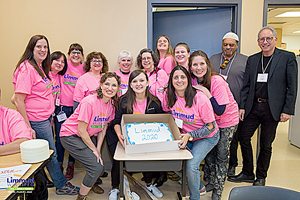
By MYRON LOVE
Limmud Winnipeg celebrated its tenth anniversary on the weekend of February 29/March 1 with quite possibly its best attendance to date. Close to 400 members of our community had more than three dozen sessions to choose from, with presenters from across Canada, New York and Israel joining local speakers and facilitators in providing a smorgasbord of topics both secular and religious, cultural and culinary.
As usual, this writer indulged in a representative sampling of what was on the menu, balancing local and Israeli issues with some religious study as well as delving into Jewish history. And, while each session could make for an entire feature on its own, space considerations leave me to focus on the highlights.
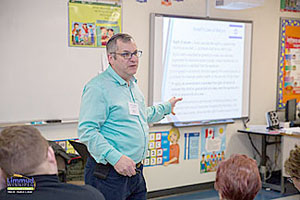
So let us begin the journey.
The first session that I attended was a presentation by former Winnipegger Jack Frohlich, who made a aliyah in 1989 and who, for the past 18 years, has been teaching conversion classes under the auspices of the National Centre for Conversion. He also works closely with the Beta Israel (Ethiopian) community.
Frohlich delivered two presentations – the first discussing the challenges facing Ethiopian Israelis and the second talking about the controversial issue of conversion in Israel. There is much misinformation concerning conversion in Israel, Frohlich pointed out.
My own understanding was that Reform and Conservative conversions are not recognized in Israel and – much to my surprise, there have been Orthodox conversions in North America that also aren’t recognized in Israel. The reality is that the only conversions officially recognized in Israel are those which are approved by the Dayanim (rabbi/judges) associated with the National Centre for Conversion.
As Frohlich noted, even a conversion by a rabbi in solidly Haredi Bnai Brak would not be recognized.
He pointed out that while Reform and Conservative conversions may not be recognized or the converts considered Jewish, they are still welcomed under the Law of Return with all the benefits that come with it.
Then there is the occasional report that converts have to vow to observe all the Mitzvot both during the conversion process and forever after on pain of having the conversion rescinded. Not true, Frohlich said. Once one is accepted into the Jewish community, the individual can life his or her life the same way those who are born Jewish do.
“Becoming a Jew is a two-sided coin,” he said. “It is a two-for-one deal. You are adopting a new religion and you become part of the Jewish People.”
While the original Law of Return applied only to Halachic Jews born of a Jewish mother, he noted, in 1970, the government expanded the Law of Return to include anyone with at least one Jewish grandparent – even though the individual would not be considered Jewish per se.
Of the Russian immigrants who came to Israel in the 1990s, Frohlich pointed out, about 50% were not halachically Jewish.
He reported that Israel registers about 2,500 conversions a year with most of the converts being women. “Weddings often follow,” he said.
Quite a number of Filipinos (Filipinas?) and Arab Moslems are among the converts, he noted.
And the government and the rabbinate continue to make the conversion process easier, he added. In recent years, all fees have been removed and a more flexible approach has been adopted for the learning process.
“Most students are pleasantly surprised by their ulpan/educational experiences,” Frohlich said.
He reported that about 80% of conversion applicants are approved the first time they appear before the Bet Din with the remainder often approved following a few more months of studying.
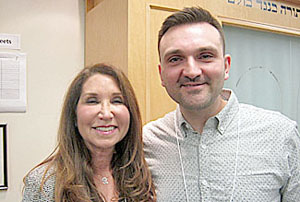
From Israel, we travel back to Winnipeg to hear the story of Shimon Segal. The 33-year-old criminal lawyer began life with the deck stacked against him. He has succeeded in life through his own inner strength and the love and support of David and Glenda Segal and their sons, Devin and Ryan.
Segal was born into a strictly Orthodox – but dysfunctional family. Over his first few years, he was imbued with Orthodox practice and tradition and a strong Jewish identity. The middle of three children, he recalls a lot of arguing in the home.
He began his schooling in the Hebrew Bilingual program at Centennial School in the North End. After Grade 2, he recalled, the family moved south, where his parents became less and less observant and opened a grow-op in their home. “The house was always moldy and dirty,” he remembered.
While attending Brock Corydon’s Hebrew Bilingual program, he made some friends among his classmates -, in particular, Devin Segal.
The Jewish Child and Family Service first stepped into the family situation when he was seven. He noted that his mother was abusive and his father disinterested.
When he was ten, his parents split and he found himself back in the North End in a group home where he was the only Jewish kid. “I was living a double life,” he recalled. “I was taking the bus to Brock Corydon every day. At the group home, I started smoking cigarettes and marijuana and wearing gang clothes to try to fit in. I would show up at school smelling of cigarettes. I didn’t fit in anywhere. While I remained close to my friends at Brock Corydon, most of their parents didn’t approve of their sons hanging out with me.”
The exception was David Segal. “My dad (David Segal) began to be involved in my life when I was ten,” Shimon said. “He took an interest in me. He would take me fishing sometimes. There was no sense of judgment. I relaxed when I was with him.”
For a short time, Segal was housed with foster parents Barry and the late Marsha Weber, to whom he is also grateful. The Webers took in foster children for short periods of time.)
At the age of 12, he was returned to his birth mother for a time. That didn’t work out. He spent some time in the Manitoba Youth Centre and with a Christian foster family who sent him to a bible camp. “They were only in it for the money,” he said of those foster parents.
“I began spending more and more time with the Segals,” Shimon said.
After several excruciating weeks with the Christian family, he was returned to his birth father who, after a short time, locked him out of the house.
That was when his life really took a turn for the worse. He ended up living on the street in Tuxedo. “I tried Osborne Village, but it felt too dangerous,” he recalled. “In Tuxedo, I felt safer. I slept wherever I could – partially-built buildings, a friend’s mother’s station wagon, even in the Assiniboine Forest for a time.”
It wasn’t long after that David and Glenda Segal invited him to move in with them permanently and become a member of the family. “David and Glenda became my dad and mom and Devin and Ryan my new brothers.”
He added that he has kept in touch with his own birth siblings – a brother and sister- and that the Segal family has included them in family gatherings.
The love and support from his new family, Shimon said, enabled him to rekindle his inner Jewishness and feel part of the Jewish community again.
Over the last ten years, Segal has been able to earn a law degree. He has married and become a father. And he has given back to the community and, through his legal work, other vulnerable people.
“Thanks to the Segal Family, I have been able to live a normal life,” he said.
“What the Segal Family did for Shimon was amazing,” said Randee Pollock, the Jewish Child and Family Service’s Adoption, Fostercare and Rescue Co-ordinator. “Our goal is to keep families together – but that is not always possible where there are mental health or addiction issues or perhaps there has been a death in the family.”
She reports that the JCFS currently has 15 Jewish children in care with nine foster homes and three places of safety available to house them. “We are always in need of more Jewish families who are willing to open their homes to children in our community who are in need of shelter,” she noted.
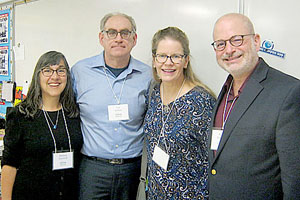
From Winnipeg, we again pack our bags for our third port of call as we follow Rabbi Mark Glickman, the spiritual leader of Reform Congregation Temple B’nai Tikvah in Calgary, as he travels the world in search of the lost story of the Cairo Genizah.
Glickman is the author of “Sacred Treasure – the Cairo Genizah: The Amazing Discoveries of Forgotten History in an Egyptian Synagogue Attic”. (He also delivered a talk at Limmud in 2016 about his follow-up book, “Stolen Words: The Nazi Plunder of Jewish books”.)
Glickman’s research took him to archives at Cambridge University and the Jewish Theological Seminary in New York – the world’s two largest repositories of Genizah documents – and, accompanied by his son, Jacob, to the Ben Ezra Synagogue in Cairo, which was the original repository of the Genizah.
So, you might be wondering what a “genizah” is? As Glickman pointed out, we are a People of the Book. Under Jewish Law, it is not allowed to throw out sacred books. The proper way to dispose of them is burial in a Jewish cemetery. But they have to be stored somewhere until they can be buried. In my own synagogue, the genizah – or storage space – is a cupboard downstairs. For many centuries in the old Ben Ezra Synagogue in Cairo, it was a space – a hole in the wall in the women’s section upstairs.
The current Ben Ezra Synagogue, Glickman reported, was built in the 11th century on the banks of the Nile, replacing an earlier shul which was destroyed by flooding. In the Middle Ages, he noted, Egypt was home to a large and influential Jewish community one of whose most prominent members was the great Rabbi Moses Ben Maimon (aka Maimonidies aka the Rambam).
There are a number of Western characters associated with the discovery of the treasure trove of documents that were stored in the Ben Ezra genizah. The first outsider to appear on the scene was one Simon Von Geldern, a German Jewish adventurer and Orientalist who moved in Bedouin circles. He visited the Genizah, but took nothing from it.
Then there came a Rabbi Jacob Saphir, a dealer in Jewish documents in Jerusalem, who heard about the Genizah from Van Geldern, dropped in, and brought back about 1,000 documents for sale. Next was Abraham Firkovitch, a member of the breakaway Karaite sect – who came in search of documents of historical interest to the Karaite community.
In the 1880s, Elkan Nathan Adler, a prominent member of England’s Jewish community – and son and brother of Chief Rabbis of England, visited and left with more than 6,000 documents (as possibly a Torah cover).
The scholarly interest in the Genizah, Glickman noted, began in 1996 when Rabbi Solomon Schechter – then teaching at Cambridge University, had an encounter with an unusual colleague. Twin sisters Agnes Smith Lewis and Margaret Dunlop Gibson were Semitic scholars and travellers who had recently returned from an expedition to St. Catherine’s Monastery at Mount Sinai. Among the documents they brought back was one in a language that the two multi linguists didn’t recognize. They asked Schechter if he could help. He recognized it as a tractate for the book Ben Sira, a book of wisdom that had not been included in the Talmudic canon. The book at that time was only known from a Greek translation.
“The last person to have seen that book in the original Hebrew was Saadia Gaon over 1000 years before,” Glickman noted. “The document was from the Ben Ezra Genizah. Schechter – very excited by this find – quickly arranged to visit the genizah and subsequently transferred close to 200,000 documents to Cambridge for translation and study.”
The documents – 300,000 in total – consisted not only of religious material but also letters, business records, medical prescriptions and the other detritus of every day life. Among the documents that Glickman highlighted was the oldest piece of Jewish sheet music (composed by an Italian Catholic priest who had converted to Judaism), an early Hebrew reading primer and the last letter that Maimonides received from his beloved younger brother, David, before the businessman was lost at sea en route to India.
Over the past 20 years, Glickman reported that advances in computer technology have made translating the documents and connected fragments much easier. He noted that the Freidberg Genizah Project was established in 1999 as a non-profit international humanities venture established by philanthropist Albert Friedberg of Toronto to promote and facilitate research of the material discovered in the Cairo Genizah. Under the aegis of the project, all of the genizah materials are in the process on being inventoried and put online.
Glickman completed his presentation with a video of himself peering into the now empty genizah.
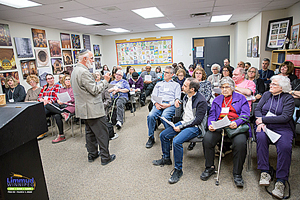
And we conclude with a little Torah study led by Rabbi Yosef Benarroch, spiritual leader of the Adas Yeshurun Herzlia Congregation. His question: Does being religious make you a better person?
In contemplating the question, Rabbi Benarroch first turned to the story of creation, noting that while the Lord commented after each of the first five days of creation that work was “good”, He does not say the same about His creation of mankind. Rather, the Torah says that the Lord “created Man in his image”.
So what does that mean? Benarroch quoted Torah and referred to several rabbanim – including Rabbi Akiva, Rambam and the late modern sages, Rabbis Joseph Soloveitchik and Abraham Joshua Heschel – as well as talmudic commentaries and their interpretations. One suggestion that Benarroch made is that of all G-d’s creations, man is the only one that can also create.
And while G-d doesn’t have an “image” in the way that man does, He does have attributes that can well be emulated – being slow to anger and quick to forgive, compassionate, gracious and merciful – attributes that are part of a prayer shul goers sing on Pesach, Shavuot and Sukkot before taking out the Torah and at Selichot in the days leading up to the High Holidays.
So, while engaging in regular religious practice itself doesn’t determine good or bad behavior, Rabbi Benarroch concluded, attempting to model your life after the qualities exhibited by the Lord – in His image – will, without a doubt make one a better person.
Local News
Cheryl Hirsch Katz, Jewish Child and Family Service’s longest serving staffer, set to retire at end of the month

By MYRON LOVE “I loved working at Jewish Child and Family Service,” says Cheryl Hirsh Katz, who is due to retire at the end of June. “I have always appreciated the warm and welcoming atmosphere here. I feel that the people working here are my extended family. I am going to miss my colleagues”.
“I have derived great satisfaction over the years to have been able to help many people in our community of all ages through my work at JCFS,” she continues.
After 44 years at the agency, Katz, the longest-serving member of the staff, was given an appreciative send-off at the JCFS’s recent (June 23) Annual General Meeting at the Shaarey Zedek Synagogue.
The daughter of Art and Bess Hirsh, Cheryl grew up in Garden City. She attended Peretz School, then Jefferson Junior High and Garden City Collegiate. She joined the staff of JCFS in 1981, shortly after receiving her Bachelor of Social Work degree.
She earned an MSW in 1990.
“I chose to become a social worker,” she recalls, “because I always wanted to be able to help people.”
Katz was originally hired by JCFS to work with newcomers. After a couple of years, she was given responsibility for looking after the needs of older adults.
“I really enjoyed working in older adult services,” she says. “That is where I spent the bulk of my time at JCFS.”
After ten years as a case worker, she was promoted to a supervisory role. Later, she was also given responsibility for mental health and addictions programming and settlement services, while keeping the older adult files under her purview.
“As a supervisor, I wasn’t directly involved with individual clients,” she points out. “I was more involved with programming. Among the programs for seniors we organized were – for example – sessions on elder abuse, digital storytelling and memory loss.”
She notes that one of the trends she has seen over the last 44 years is that people are living longer and living in their homes longer. A lot more of our clients are living well into their 90s,” she observes. “We have had to continually expand our staff and the services we provide in order to accommodate the growing demands of an aging population.”
She also spoke of the mental health needs of seniors and aging Holocaust survivors.
She says that she has mixed feelings about leaving JCFS. “After so many years working full time, I am going to have to create a new routine,” she comments.
She notes that, now that she is retired, she will have more time to spend with her parents – who are in their 90s.
And then, there are the two dogs to look after. “I will have time now to try new activities,” she says. “ I might learn to play mah-jong.”
She speaks about maybe doing some traveling – although her husband, Murray, is still working full time.
(She and Murray have one daughter, Farah.)
“Retirement may also include some volunteering,” she adds.
It is quite likely, she will be continuing her association with JCFS but in a volunteer capacity.
Local News
Gray Academy students shine in provincial, national debating competitions

By MYRON LOVE It has been another good year for Gray Academy’s high school students who participated in provincial and national debating competitions. The best results were recorded by Grade 9 student Noa Mednikov, who finished fourth overall nationally, fourth in interpretive reading, and fifth in persuasive speaking at the junior National Public Speaking Championship in early May in Vancouver.
Last October, in the Junior Provincial British Parliamentary Championship – which was held at St. John’s-Ravenscourt – Noa and her partner, Raya Braunstein, finished third as a team while Raya placed third in individual debating.
Their fellow Grade 9 student Maxim Moscalenkov tied for first in persuasive speaking in Vancouver, while the Gray Academy team of Gabe Tapper and Aaron Koplovich finished fifth. Aaron also finished fifth in his individual debate.
Earlier, in March, Maxim finished fifth in the Provincial Juniors debating competition, which was held at Balmoral Hall He and his debate partner, Nate Shenkarow, finished seventh among the teams entered. Last November, he and partner, Ethan Tenenbein, finished seventh in the Junior Prepared Tournament – just behind the Gray Academy team of Nate Shenkarow and Jack Kay.
At the senior high level in that competition, the team of Jacob Tenenbein and Jonah Novoseller finished fourth and Jacob was recognized as fifth best in an individual capacity. Jonah and Jacob also paired up to win the Asper Cup, which was held at their home school.
Jacob represented Manitoba at the Junior National Speech Championship in Vancouver in May and, last October, he and Grade 12 Gray Academy students Julie Krozkin and Daniel Bokser represented Canada at an international debating tournament in Bermuda.
Gray Academy’s debating program was introduced by Linda Martin in 2003. She also led the debating teams at Balmoral Hall. In 2011, Martin was succeeded by Gray Academy high school English teacher Andrew Kaplan.
“Andrew has done a wonderful job with the debating program” says Martin, who has a debating trophy at Gray Academy named in her honour, as well as a provincial trophy for best individual junior debater. “Over the years, Gray Academy students have done very well in many local, national and international competitions,” she adds.
About three weeks ago, this writer had the opportunity to sit down with Andrew Kaplan and six of the school’s top debaters while they discussed the benefits of learning how to debate. According to Noah Strauss – who competed in the Junior Provincials at Balmoral Hall in March, public speaking leaves him with a feeling of accomplishment.
“It’s a good skill set to have,” he observes. “It builds confidence.”
“A benefit of being able to debate is that you learn how to convince people that you know what you are talking about,” adds Maxim Moscolenkov.
Raya Braunstein notes that being able to debate is a skill that she expects to be helpful in many university courses which she may choose to take.
As Andrew Kaplan notes, the ability to express yourself has a great impact in whatever career you choose to pursue.
He points out that debating is compulsory at Gray Academy for all Grade 7 and 8 students – and students can continue debating as an option in the higher grades
Of course, competitive debating is not for everyone. For those students who opt to take that path, the journey begins with internal school debate competition – with the top debating teams and individuals qualifying for local tournaments and – potentially – beyond.
Andrew Kaplan reports that a small number of high schools in Winnipeg and southern Manitoba have active debating programs – including St. Johns Ravenscourt, St. Paul’s High School, St. Mary’s Academy, Garden City and Maples Collegiates in the Seven Oaks School Division, St. Maurice (a Catholic School), as well as Morden Collegiate and Dasmesh, a Sikh private school.
Kaplan expresses his appreciation to the Asper Foundation and an endowment spearheaded by the Kives Family for providing funding for the Gray Academy debating program – as well as the Andrew Slough Foundation – which was established by his friends in memory of the outstanding former Ravenscourt student debater and lawyer who passed away suddenly two years ago at the still young age of 38.
I am confident that our Jewish community can look forward to the continued success of Gray Academy’s star debaters and to the continual emergence of future stars as the times goes by.
Local News
Antisemitism has crept into grade school in Canada

Antisemitism in Canada has moved beyond protests and politics; it is now entering classrooms and altering how Jewish children see themselves functioning within them.
A a university student I have observed the experience of my younger brother in grade eight as a Jewish student. Over the past few months, his school has been at the center of several deeply troubling incidents that have made him feel unsafe in our parks, community, and even his school. Swastikas were drawn around the community, in parks and ponds. Additionally, an older man, who claims to be a pro-Palestinian influencer, stood outside his predominantly Jewish school wearing a keffiyeh, filming a video which then circulated between students on TikTok.
This same man later showed up to our local Jewish community center in keffiyeh to allegedly watch his son play basketball where my brother and many of his classmates go for their lessons, basketball games, and Jewish events. These moments made him and his peers feel watched and targeted just for being Jewish. Local political representatives condemned the incidents and raised awareness about antisemitism, but the fear among students didn’t go away. The feeling of being targeted for simply existing has been taught to my brother, something my parents had tried their hardest to escape from.
Most recently, my brother was chosen to represent his school at a regional science fair. When one of the judges arrived wearing a keffiyeh, he froze. For many, including my brother after the incidents he has faced, the keffiyeh represents a political message. But even more so for my younger brother, it is tied to the fear and intimidation he had already experienced. He felt nervous, distracted, and unsure of how to act.
This is not about silencing political expression. It is about a child who came to share his ideas and left feeling uncertain and afraid. It is about the atmosphere forming in Canadian schools, where Jewish students are being made to feel targeted and unwelcome.
His school made an effort to address the incidents, but the impact is lasting. Posts on social media, much can be very vague at times about inclusion cannot fully undo the feeling of being singled out. A kind word from a teacher does not erase the fear that builds when threats are left unspoken but deeply felt.
I am writing this as a sister who watched her younger brother lose a moment that should have been filled with confidence and pride. He deserved to feel safe. So do all Jewish students in this country.
Moving forward, schools must take concrete steps to protect all students. Antisemitism cannot only be addressed when it becomes violent or overt. It must also be recognized when it appears as intimidation, symbolic targeting, or political messaging that creates fear among students. Children should never have to question whether they are safe in their own classrooms or community spaces.
Events that are meant to support and celebrate students must remain focused on them. Individuals who feel the need to bring political symbols or messages into school grounds or children’s events should not be welcomed in those spaces. Schools must make it clear that their environments exist to support learning, safety, and inclusion, not to host agendas that can intimidate or isolate students.
Administrators and educators must develop clear guidelines for identifying and responding to antisemitic behavior in all its forms. This includes strengthening security measures, offering ongoing staff training, and engaging directly with Jewish families to understand their concerns. Inclusion is not a one-time statement. It is a responsibility that must be reflected in everyday decisions and actions. No child should ever feel unsafe or unwelcome because of their identity.
The author is a Campus Media Fellow with HonestReporting Canada and Allied Voices for Israel who lives in Toronto.
